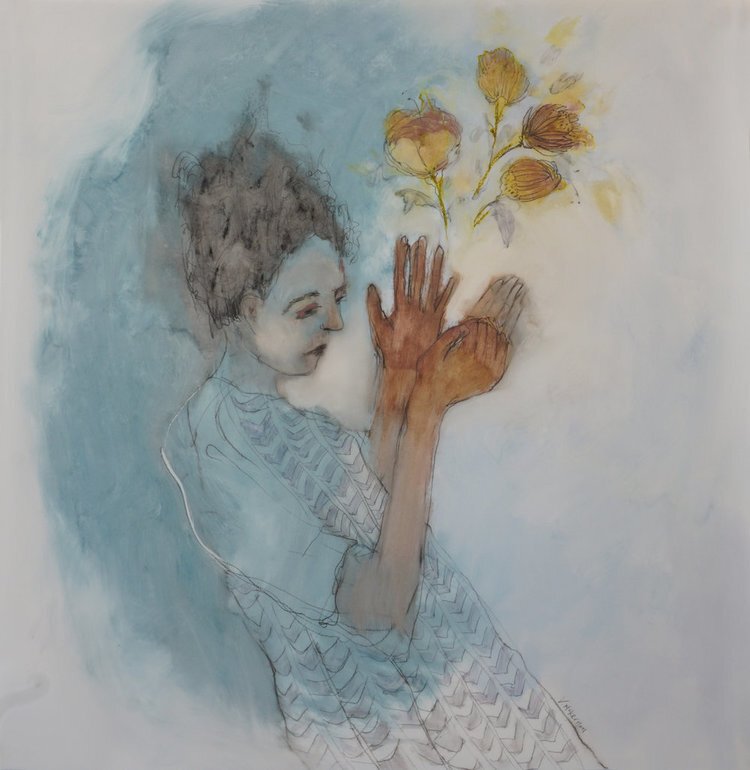Vanessa McKernan
Bio
B. 1981. Vanessa McKernan is a visual artist living and working in Toronto, Canada. She works on canvas, wood, mylar and paper with both oil and water-based materials. Vanessa studied Painting and Drawing at Concordia University and completed her honours BFA in 2006. In 2020 she was awarded the prestigious Elizabeth Greenshields Foundation Grant for emerging artists.
Studio Practice
Painting and my time in the studio is really a way for me to metabolize my experience of the world. In front of the canvas I am primarily interested in process, and the way in which the act of painting is a space for the interaction between intention and the unconscious. I like to build narratives within the canvas—often layering observations, myths, dreams and personal history. Paintings from 2020/21, worked with river and water symbology as a means to explore birth, death, mothering and the post-partum body. Recent work continues to use the figure and elements of the natural world to explore a personal conflict between public and private selves and spaces.
Mourning on the River
Like so many people during the pandemic I was constantly trying to get away from the city crowds to more rural/ outdoor areas and ended up spending a ton of time around rivers. One of these was the Teeswater River (Chepstow, ON) where my maternal grandmother lived. In December of 2020 at 96 years of age, she passed away. A few months prior to her passing, I gave birth to my son Raphael. Mourning on the River is ultimately a reflection of a moment in time where death and loss overlapped birth and new life. Within this painting there is a river in the background and references to the pastoral landscape of my Grandmother’s farm. The women in the painting mourn, but also bear witness to the birth of a child, reflected in the figure on the right who holds a form that is half child, half bouquet.
Sunday in the Park
This painting is a recontextualized version of George Seurat’s 1884 work A Sunday Afternoon on the Island of La Grande Jatte. I am a lover of post-impressionist painting but also question the predominantly male perspective through which this art historical period has been recorded. In my painting I have inserted a woman into the foreground in place of the reclining man in Seurat’s version. She is caught in a moment of ecstasy, in commune with nature and her inner self in the public setting of the park.
















